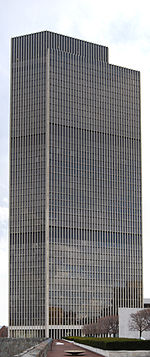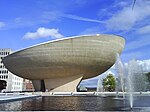Mansion Historic District

The Mansion Historic District, sometimes referred to as Mansion Hill, is located south of Empire State Plaza in Albany, New York, United States. It takes its name from the nearby New York State Executive Mansion, which overlooks it. It is a 45-acre (18 ha), 16-block area with almost 500 buildings. Many of them are rowhouses and townhouses built in the middle and late 19th century that remain mostly intact today. It was first developed in the early 19th century as a small group of estates for wealthy citizens. Later it was subdivided, becoming the first home for several waves of immigrant groups, most notably Italian Americans. In the mid-20th century it began to decline when the construction of Empire State Plaza cut it off from downtown and adversely impacted the neighborhood. A local neighborhood association was formed during this period and has been credited with helping the Mansion neighborhood recover and become a desirable place to live in the early 21st century. In 1982 it was designated a historic district by the city's Historic Resources Commission and listed on the National Register of Historic Places.
Excerpt from the Wikipedia article Mansion Historic District (License: CC BY-SA 3.0, Authors, Images).Mansion Historic District
Grand Street, City of Albany
Geographical coordinates (GPS) Address Nearby Places Show on map
Geographical coordinates (GPS)
| Latitude | Longitude |
|---|---|
| N 42.646111111111 ° | E -73.756388888889 ° |
Address
Grand Street Community Arts
Grand Street 68
12202 City of Albany
New York, United States
Open on Google Maps







